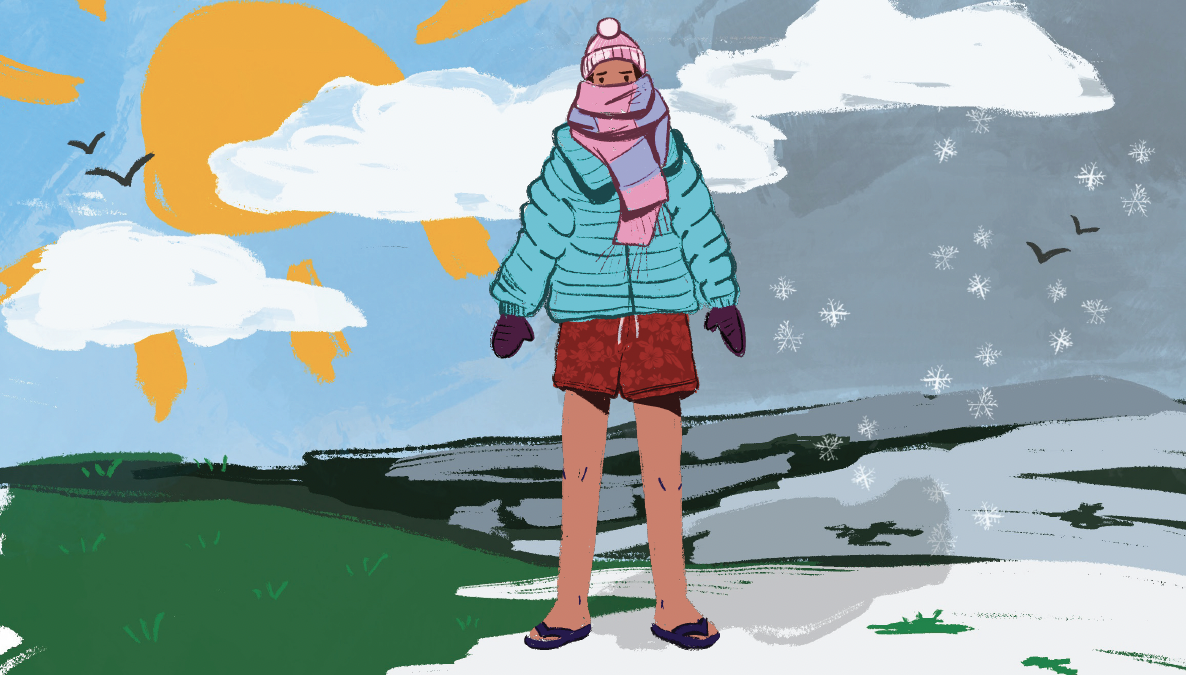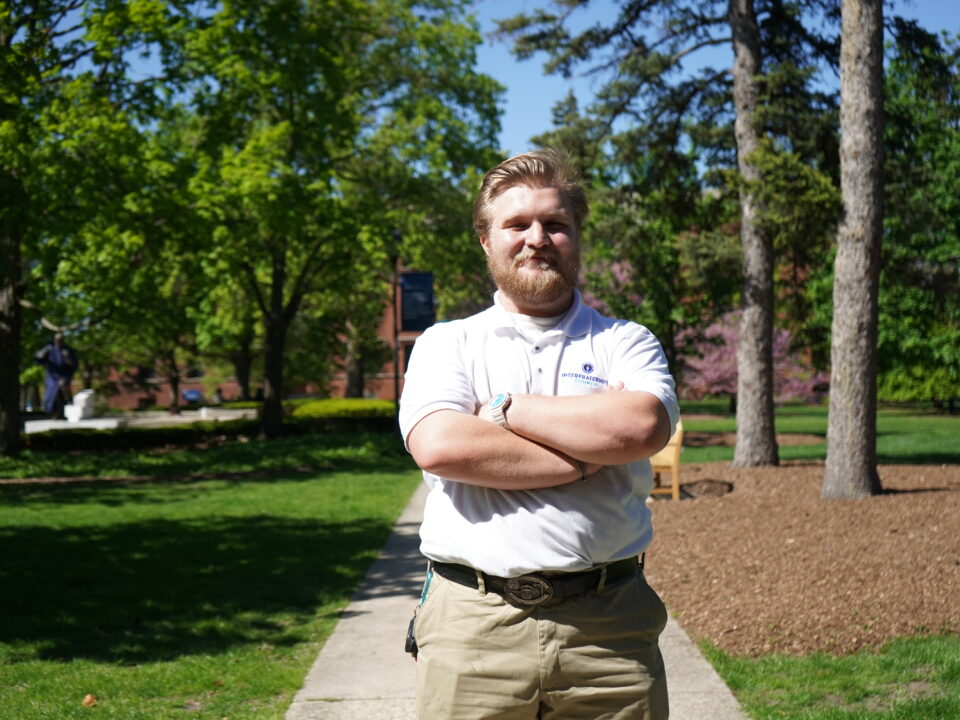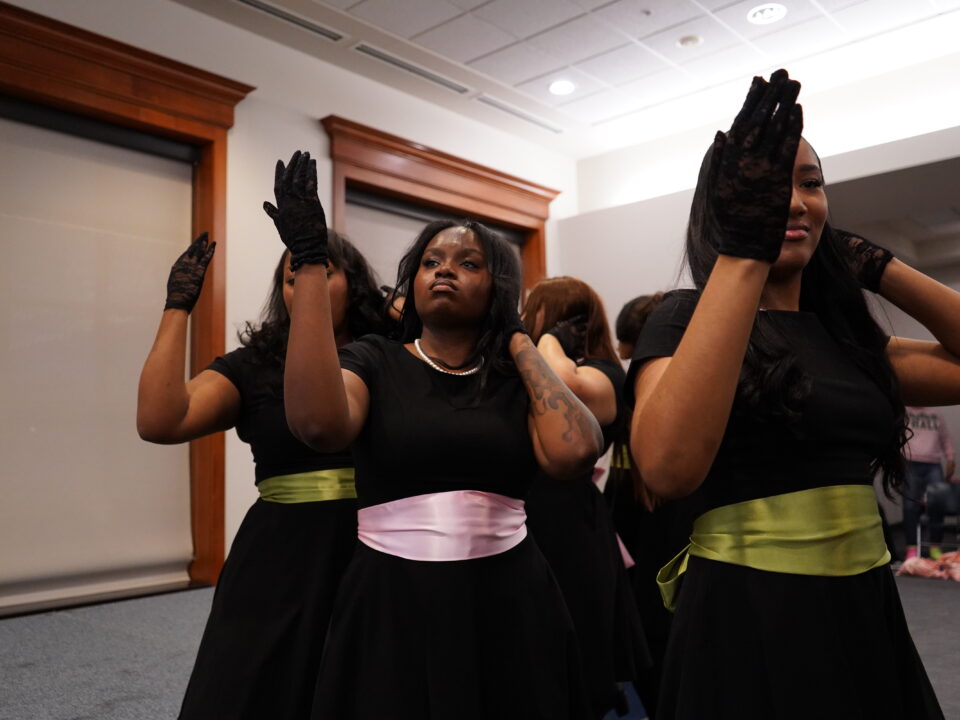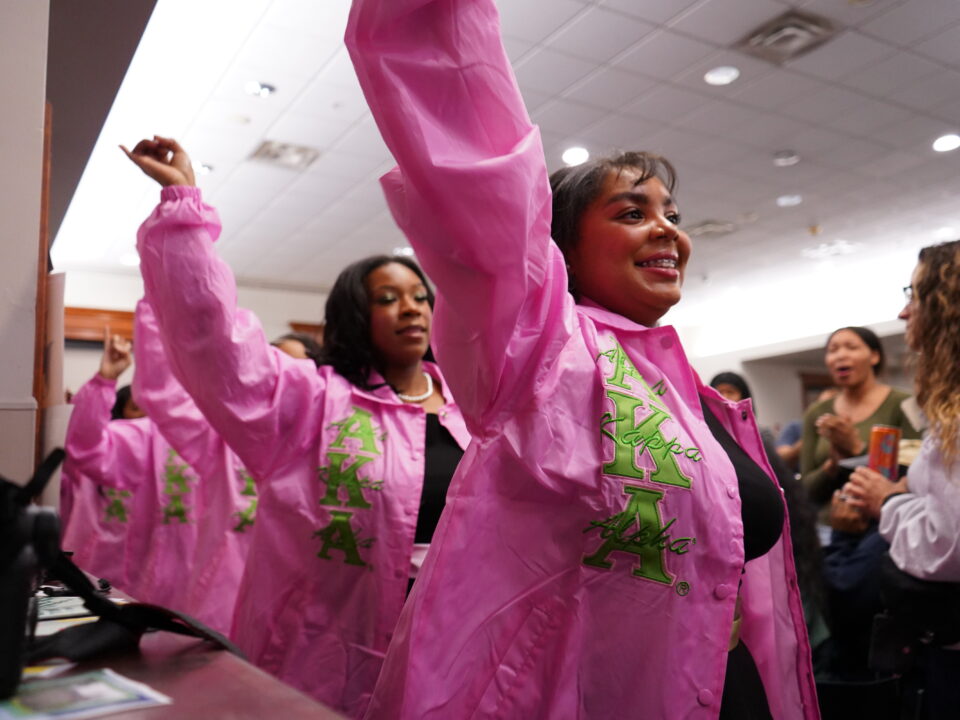Winter Coat Today, T-shirt Tomorrow: Climate Change and Severe Weather

Living in the greater Chicagoland area, the seasons have always seemed out of the ordinary. Usually, when the weather is odd, many Chicagoans simply blame it on the mystical powers of Lake Michigan. However, the recent record-breaking temperatures experienced between days of cold and snow cannot be explained away.
Climate change, no matter how controversial, is showing its true and devastating effects on our planet. And it is without a doubt that these effects are being felt by students on Elmhurst University’s campus.
On Feb. 27, there was a record-high temperature of 76 degrees.
Students went outside in the afternoon to enjoy the warm air and sunshine. Later that same evening, the campus issued a severe weather warning, and two hours later a tornado warning was issued.
The emergency alert system blared across intercoms all over campus, and EU students huddled in tornado shelter areas in the lower levels of campus buildings. However, 20 minutes later students were given the all-clear to return to their normal activities.
Tornadoes are another Midwestern phenomenon that isn’t always taken as seriously as it should be.
First-year EU student Levi Kovach has experienced close encounters with these violent windstorms and stated that while growing up he “never had to worry about tornadoes” until 2018 when one came through their hometown.
“I’m worried this will only get worse,” said Kovach.
Tornadoes across the Midwest have increased in not only occurrence but severity over the past decade or so, with more outbreaks and stronger tornadoes occurring in winter months.
Elmhurst rarely experiences tornadoes; however, that does not mean the city or university campus is safe from any danger. Most tornadoes that touch down in the area are within two to 10 miles of Elmhurst, which will lead to a warning issued for the city and subsequently the campus.
There was an incident during New Student Orientation in 2011 when a tornado warning was issued, which forced the events of that day to be canceled. Strong winds caused damage to the fences along Langhorst Field; no one was injured.
On March 12, 1976, two tornadoes struck EU on the east and west sides of the city. One came from Oswego and passed through Villa Park while the other passed from Northlake towards Wilmette. Two people died, and there was extensive damage.
In almost 50 years, no tornado has passed through the city again, but some EU students have raised concerns that, due to the drastic weather changes, severe weather threats could be more real.
“I believe that there will be a tornado hitting campus within my time here,” said Kovach.
Sophomore Cassidy Fanella believes that “due to climate change and the increase in tornado watches, the possibilities of a tornado touching down in Elmhurst is high.”
Junior Jason Yost also believes that a tornado may pass through campus as “there’s been touchdowns as close as Naperville recently.”
Yost is referring to the destructive tornadoes that passed through Naperville in the summer of 2022.
With growing concerns of a severe weather threat coming to campus, some students have differing ideas on how well EU is prepared to handle a threat such as a tornado.
Senior Leo Almeida believes that “students wouldn’t know what to do in a situation [where there’s a tornado].”
Almeida also expressed how in general there is a lack of sense of “how to take these warnings seriously.”
“The weather alerts last week were incredibly sporadic,” said Almeida.
Fanella believes that the campus is prepared because of “speakers in all of the buildings, including the dorms,” which are used to alert students about emergencies.
Kovach has reservations about the campus’ preparedness, as “a lot of things are not as secure as they should be.”
The question remains, what can be done about this? The mere thought of combating climate change often leads to exhaustion and apathy, especially when looking at how larger corporations are the main contributors to climate change.
Thinking about the immediate, as weather changes lead to more severe situations, there are some ways the campus can be proactive to be better prepared, according to Almeida.
“I think more focus should be placed on knowledge of safety procedures in the classroom at the start of the semester as well as in the dorms,” said Almeida.
Most buildings on campus seem strong enough to withstand the winds of a tornado, but that will not be the only harsh weather the campus will have to go through.
With the 100-degree heat on New Student Move-In Day this past August, leaving hundreds of students in unairconditioned dorms to sleep in the Frick Center, and pipes bursting underneath the sidewalks due to drastic temperature changes in the winter season, will the campus and the student body be able to handle drastic weather changes seemingly outside of anyone’s control?



